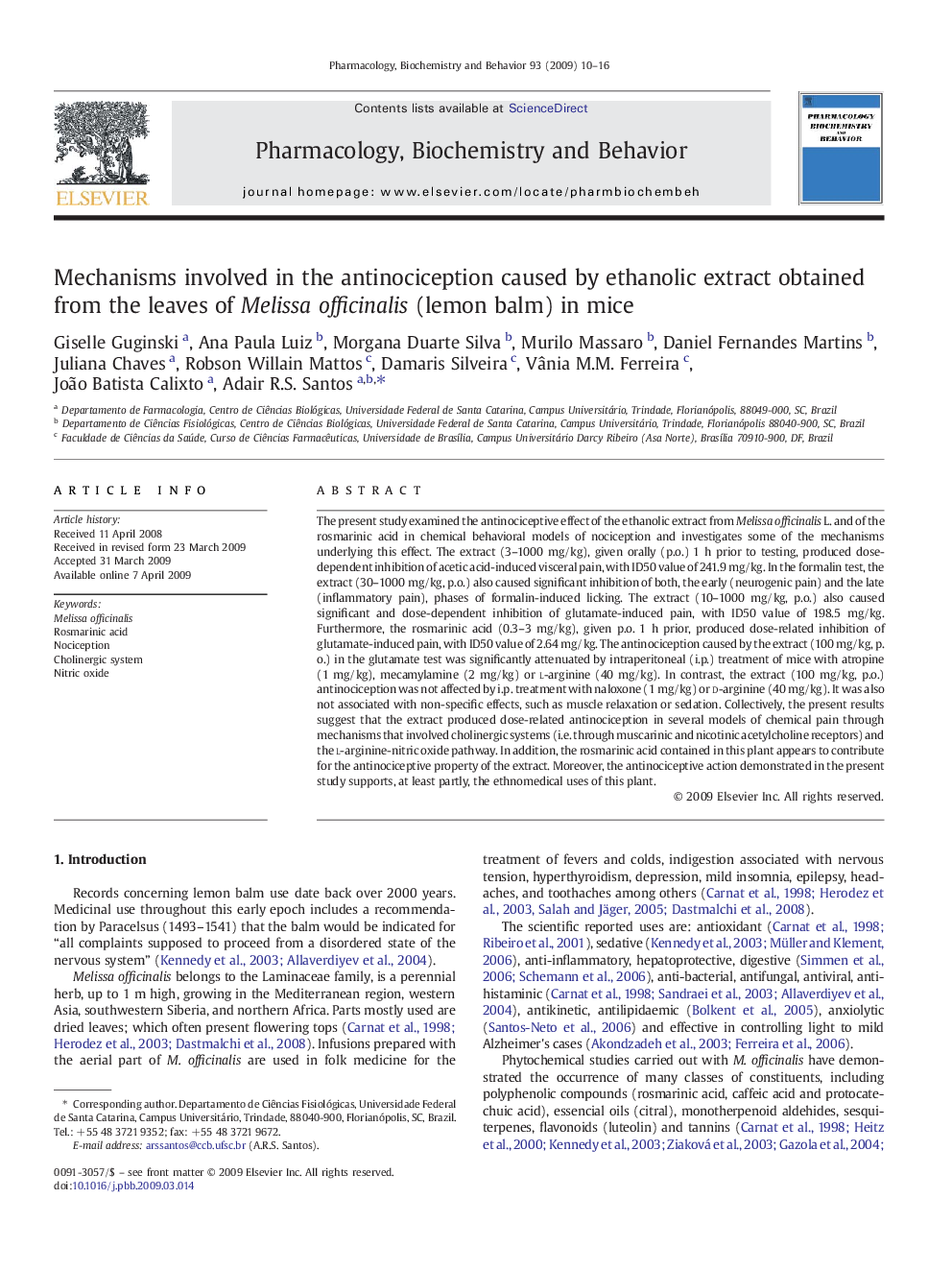| Article ID | Journal | Published Year | Pages | File Type |
|---|---|---|---|---|
| 2013618 | Pharmacology Biochemistry and Behavior | 2009 | 7 Pages |
The present study examined the antinociceptive effect of the ethanolic extract from Melissa officinalis L. and of the rosmarinic acid in chemical behavioral models of nociception and investigates some of the mechanisms underlying this effect. The extract (3–1000 mg/kg), given orally (p.o.) 1 h prior to testing, produced dose-dependent inhibition of acetic acid-induced visceral pain, with ID50 value of 241.9 mg/kg. In the formalin test, the extract (30–1000 mg/kg, p.o.) also caused significant inhibition of both, the early (neurogenic pain) and the late (inflammatory pain), phases of formalin-induced licking. The extract (10–1000 mg/kg, p.o.) also caused significant and dose-dependent inhibition of glutamate-induced pain, with ID50 value of 198.5 mg/kg. Furthermore, the rosmarinic acid (0.3–3 mg/kg), given p.o. 1 h prior, produced dose-related inhibition of glutamate-induced pain, with ID50 value of 2.64 mg/kg. The antinociception caused by the extract (100 mg/kg, p.o.) in the glutamate test was significantly attenuated by intraperitoneal (i.p.) treatment of mice with atropine (1 mg/kg), mecamylamine (2 mg/kg) or l-arginine (40 mg/kg). In contrast, the extract (100 mg/kg, p.o.) antinociception was not affected by i.p. treatment with naloxone (1 mg/kg) or d-arginine (40 mg/kg). It was also not associated with non-specific effects, such as muscle relaxation or sedation. Collectively, the present results suggest that the extract produced dose-related antinociception in several models of chemical pain through mechanisms that involved cholinergic systems (i.e. through muscarinic and nicotinic acetylcholine receptors) and the l-arginine-nitric oxide pathway. In addition, the rosmarinic acid contained in this plant appears to contribute for the antinociceptive property of the extract. Moreover, the antinociceptive action demonstrated in the present study supports, at least partly, the ethnomedical uses of this plant.
